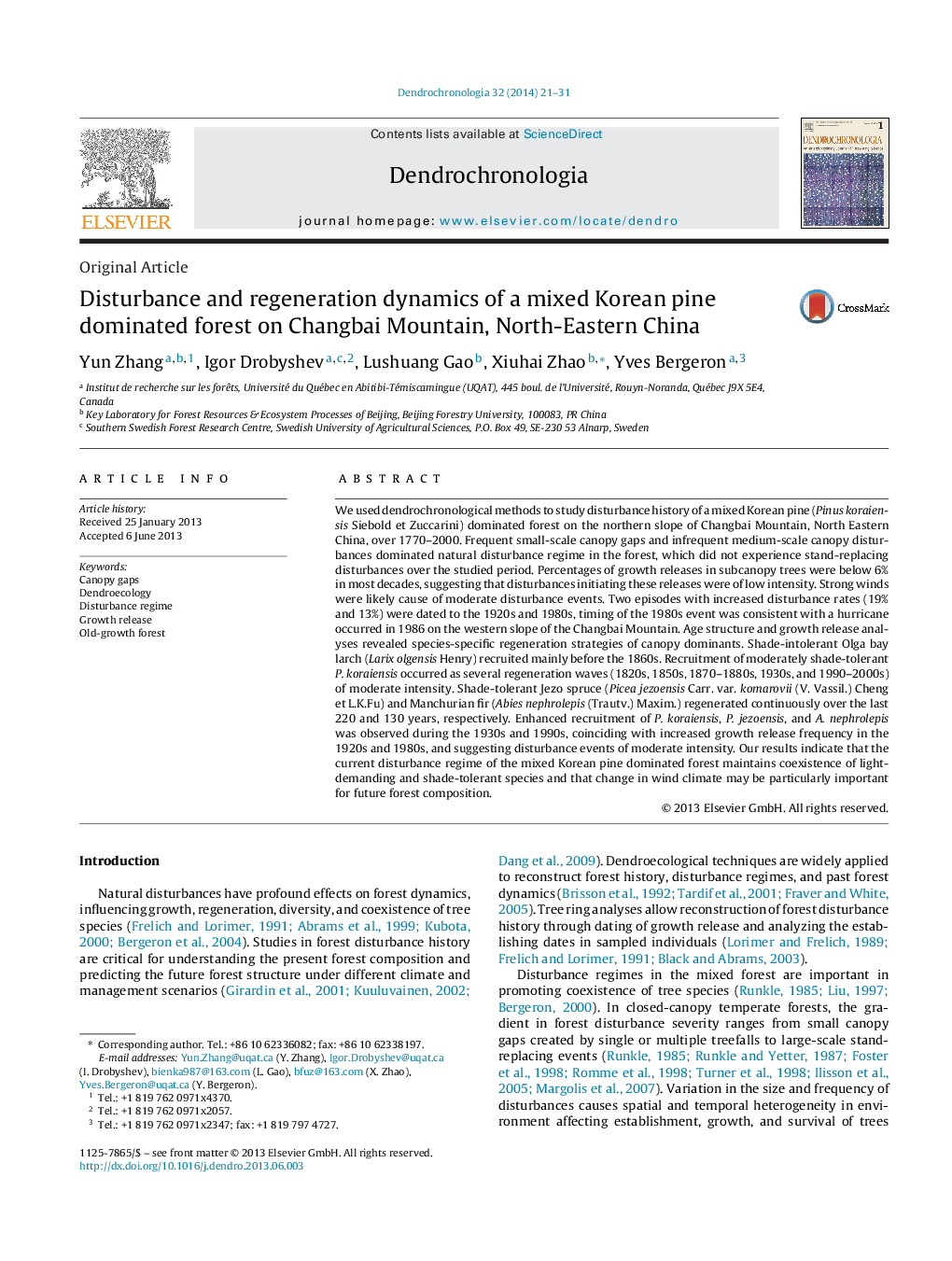| Article ID | Journal | Published Year | Pages | File Type |
|---|---|---|---|---|
| 10250231 | Dendrochronologia | 2014 | 11 Pages |
Abstract
We used dendrochronological methods to study disturbance history of a mixed Korean pine (Pinus koraiensis Siebold et Zuccarini) dominated forest on the northern slope of Changbai Mountain, North Eastern China, over 1770-2000. Frequent small-scale canopy gaps and infrequent medium-scale canopy disturbances dominated natural disturbance regime in the forest, which did not experience stand-replacing disturbances over the studied period. Percentages of growth releases in subcanopy trees were below 6% in most decades, suggesting that disturbances initiating these releases were of low intensity. Strong winds were likely cause of moderate disturbance events. Two episodes with increased disturbance rates (19% and 13%) were dated to the 1920s and 1980s, timing of the 1980s event was consistent with a hurricane occurred in 1986 on the western slope of the Changbai Mountain. Age structure and growth release analyses revealed species-specific regeneration strategies of canopy dominants. Shade-intolerant Olga bay larch (Larix olgensis Henry) recruited mainly before the 1860s. Recruitment of moderately shade-tolerant P. koraiensis occurred as several regeneration waves (1820s, 1850s, 1870-1880s, 1930s, and 1990-2000s) of moderate intensity. Shade-tolerant Jezo spruce (Picea jezoensis Carr. var. komarovii (V. Vassil.) Cheng et L.K.Fu) and Manchurian fir (Abies nephrolepis (Trautv.) Maxim.) regenerated continuously over the last 220 and 130 years, respectively. Enhanced recruitment of P. koraiensis, P. jezoensis, and A. nephrolepis was observed during the 1930s and 1990s, coinciding with increased growth release frequency in the 1920s and 1980s, and suggesting disturbance events of moderate intensity. Our results indicate that the current disturbance regime of the mixed Korean pine dominated forest maintains coexistence of light-demanding and shade-tolerant species and that change in wind climate may be particularly important for future forest composition.
Related Topics
Physical Sciences and Engineering
Earth and Planetary Sciences
Atmospheric Science
Authors
Yun Zhang, Igor Drobyshev, Lushuang Gao, Xiuhai Zhao, Yves Bergeron,
